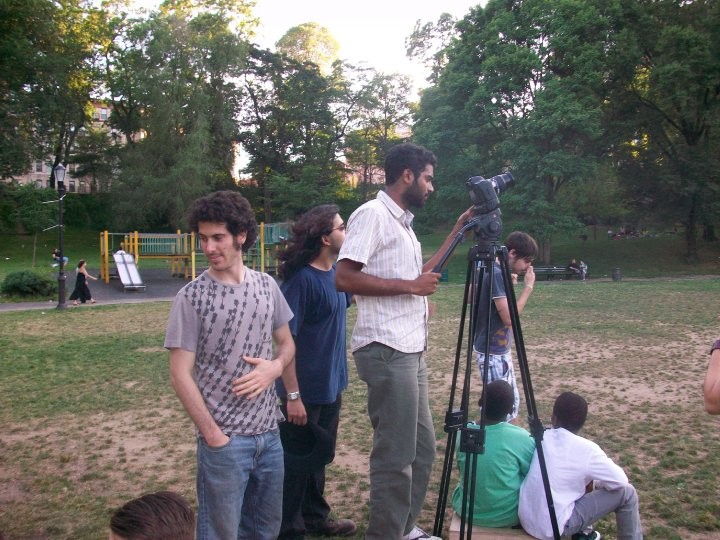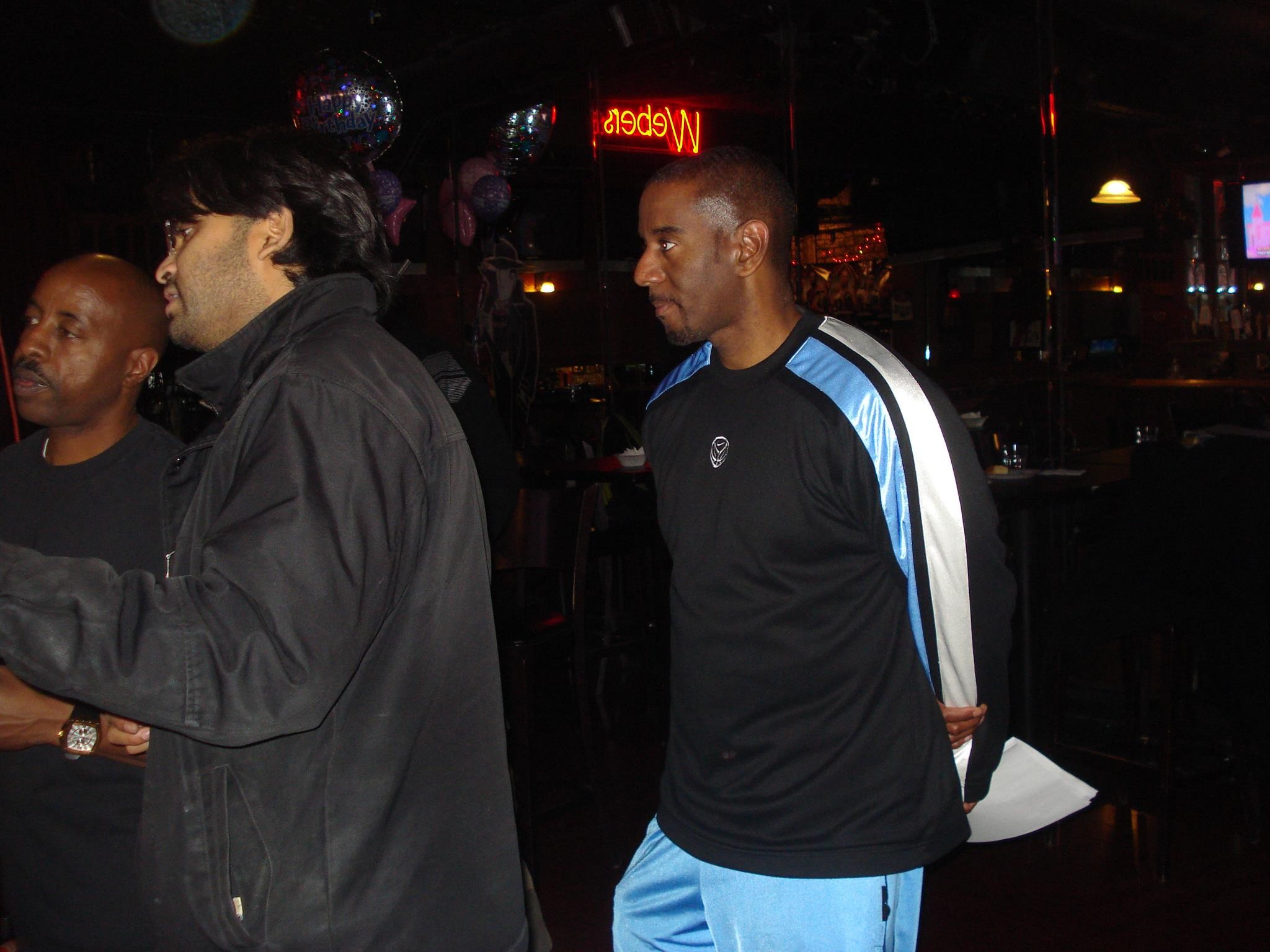We caught up with the brilliant and insightful Josh Seven a few weeks ago and have shared our conversation below.
Hi Josh, thanks for joining us today. Can you talk to us about how you learned to do what you do?
As a Filmmaker, I see my evolution in three stages. Novice, Intermediate and Proficient. Let me take you all through the journey from knowing little to nothing to having intuition and instinct.
When I stepped on the path of becoming a filmmaker, I started from scratch at the very bottom. I began as a gopher running errands for different departments and assisting wherever I was required. By dabbling in different areas and taking on responsibilities from team members in various domains, I slowly began to understand the focus and duties each department was accountable for.
I found myself a natural fit as a boom operator and sound mixer and started getting invited onto productions primarily as either. Other times, I worked as a swing between the grip and electric departments and started getting invitations for those postings across various projects. I also worked with the production team as a production assistant, setting up the craft services table, helping with desk work and managing schedules, budgets and contracts.
Each of these experiences collectively started giving me a holistic understanding of film production and set operations and I started appreciating the value and effort of each position. Within a year, I was comfortable with the day-to-day running of a set and instinctively understood each vocation.
Concurrently, I had started writing screenplays of my own. Utilizing all of the experiences above, I wanted to work on my own project. I set out to direct a silent short. The reason I chose a silent film was to test my ability to communicate with the audience. I was told once that an audience ought to be able to understand the flow of a film, regardless of it having dialogue or not.
I saw opportunity in this unique challenge as it meant that, by setting certain terms and conditions and painting myself into a corner, I had to get creative by relying and focusing entirely on the visuals of the story and the facial and emotional expressions and body language of my thespians. I wrote the script with inspiration from Charlie Chaplin, Buster Keaton and The Three Stooges.
I selected actors and actresses based on their ability to communicate through their eyes, face and body. It brought a certain level of theatricality to the project which harkened back to the days of cinema’s inception.
The project, Carpe Diem, when completed, won significant recognition at film festivals with I, my crew and my thespians receiving awards and recognition for our work. This helped in convincing me of my ability to direct and I confidently started telling everyone that I am a Director.
I began working as an editor at a post-production company where I began with conversion and digitization of tapes for release across DVDs, Blu-Rays and OTT Streaming Platforms.
I also took on additional responsibilities by editing commercials, reels, music videos, ad films and marketing promotions for campaigns. I spent days and hours doing this and started noticing a unique pattern. A ton of the footage which was shot was left on the cutting room floor and less than 20% ended up in the final video on display.
This got me thinking and I reengineered my thought process by working backwards towards the beginning. I realized that I could be more economic if I only focused on the 20% of the footage which would ended up being finally used. Basically, what that meant was only shooting that footage which I will actually use in the final edit. This directly impacted my writing.
I looked at the screenplays I had written and realized I had spent unnecessary effort in explanations which could be covered more successfully with less visuals. A light bulb switched on in my head. I could directly focus on writing only that much which I’ll end up shooting for the final edit. Geared with this knowledge, I immediately began working on my next project.
The final result ended up confirming my instincts. During the shoot, I and my cinematographer only shot that which would be usable for the final cut. Each of us came up with a shot list and went to the location. We discarded those shots from both lists which would be unusable and inapplicable for the location, combined the remaining shots and focused on shooting those.
We also got incredibly creative with the location, as we framed it in a manner that it would look like five different locations. The end output, It’s Not A Game, was also recognized and facilitated as one of the best shorts that year. With this experience, my conviction and faith in my chosen path rose, and I gained the comfort to state I am a Filmmaker, with confidence and surety.

Great, appreciate you sharing that with us. Before we ask you to share more of your insights, can you take a moment to introduce yourself and how you got to where you are today to our readers.
Marrying Eastern Stylistic Sensibilities with Western Storytelling Methodologies has been my creative pursuit and endeavor. To illustrate the natural and evolutionary distinctions between the two approaches and celebrating the seamless and organic blending of both techniques is a craft I hone and nurture everyday.
A few examples ahead will highlight the differences which compel a need for common ground. In western thought, time is envisioned as unidirectional, while in eastern thought, time is realized as cyclical. In western thought, life is visualized as linear, while in eastern thought, life is understood as a circle. In western thought, love is seen as a right, while in eastern thought, love is embraced as a responsibility. There are plenty of other comparisons to draw from to illustrate further.
Finding the balance creates a unique perspective which shows the merging of different lines happening at an organic point of confluence and conduit. This convergence, indulgence, and emergence creates a distinctive space and time for shared experiences and understanding.
Seeking inspiration from filmmakers with repute and repertoire gives me an insight into their choices, as I gleam into their approaches, to develop mine. One unique trait which stalwart filmmakers such as Alfred Hitchcock, Stanley Kubrick and Andrei Tarkovsky emulated was to have as much information and action happen in front of the camera without relying on additional work in post-production.
Granted, they were working with the limitations of their time, however, by choosing this method, it compels a dedication and respect for the craft where discipline and integrity are supreme. Having directed myself, a particular quality I exude emphatically is the need to cover as much information as possible with as few shots as doable. This is stylistic, editorial and economical, both in emphasizing a filmmaker’s perspective as well as an enhancing audience member’s relatability.
This deliberate choice has informed my storytelling quality, especially during my creative process. I write with a manner in which I will end up shooting the picture, and I shoot with a manner in which I will end up editing it. Keeping this in mind, I am able to visualize the movie before I get to set, so the only thing I need to do once there, is to get it out of my head and record it onto camera.

Is there mission driving your creative journey?
I see each element of the filmmaking process as unique and distinct with its own contribution and applicability. Whether we are looking at the light, I will actively consider the approach and purpose of its necessity and lack thereof, as well as the impact of its presence and its absence.
With the camera, I have to consider the medium in which the movie is presented. Whether it be film or digital, each carry a stylistic choice. Even with each choice, there are different options which each inform the end result. This is also given tremendous and in-depth consideration.
With the sound, I have to consider the value and the need in its use and volume. Different sounds give different effects. Considering the experience of each choice allows for deliberation and decision. This also applies to dialogue and music. With dialogue, it is finding the balance between what is said and what is left unsaid. With music, it establishes the mood and the template.
These choices and considerations are applied across the board to the costumes, the production design, the locations and every other department. With each choice, there is room for innovation and creativity.
If there is any topic in which I can contribute in a unique and innovative manner, I work across the board to ensure all are working together to achieve the vision into reality. Hence, I welcome the contributions of each department to complement and enhance the stylistic palette of the project.

For you, what’s the most rewarding aspect of being a creative?
A good story which is well told will always find its audience. The stories which resonate the longest and loudest are those with the highest sincerity in their presentation and delivery.
An incredibly high quality production engages the audience through acknowledgment of their experience and creates a space to generate and build empathy. Stories which encourage and embrace such epiphanies stand the test of time and remain relevant through their timelessness.
The movies which have exemplified such virtuosity are plenty. Of the ones which have had a profound effect on my craft, I will recommend these as an introduction. The Man From Earth, The Bicycle Thief, The Apu Trilogy (counting them as one), Rashomon and Citizen Kane; and for good measure as an extra complementary delicacy, 400 Blows, to round out the list.

Contact Info:
- Website: https://vimeo.com/joshseven
- Linkedin: https://www.linkedin.com/in/joshseven1/
- Other: https://www.imdb.com/name/nm4026918/


